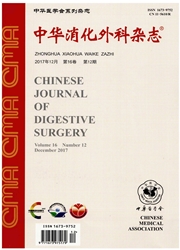

 中文摘要:
中文摘要:
目的:对比观察肝外胆管供血动脉3D重建图像与传统解剖学图像,评价其各自的优缺点。方法2012年1—12月,对来自南方医科大学珠江医院肝胆一科的10例肝外胆管梗阻性疾病患者病例进行回顾性研究。将10例患者的上腹部亚毫米CT扫描数据导入腹部医学图像3D可视化系统(MI-3DVS)程序化构建肝外胆管供血动脉3D重建图像,并与传统解剖学图像进行对比分析。结果肝外胆管供血动脉3D重建图像真实,立体感强,可以从不同角度进行3D空间的解剖关系观察;传统解剖学图像只能显示平面的解剖结构,表现手法单一,但可根据手术显微镜所观察的尸体标本灌注情况,还原绘制胆管周围血管丛等3D重建图像无法显示的血管。结论3D图像真实直观,能真实还原组织器官结构的本来面貌,便于学习和理解,是解剖学研究和学习的新途径,也可以为个体化胆道外科手术方案提供指导,但不能完全替代传统解剖图像。
 英文摘要:
英文摘要:
Objective To compare and evaluate the 3D images of supplying arteries on extrahepatic bile duct in vivo with traditional anatomic images. Methods Retrospective studies were performed on 10 cases of extrahepatic bile duct obstruction who enrolled in hepatobiliary surgery of Zhujiang hospital of Southern Medical University from January to December during 2012. The abdominal submillimeter CTA data of 10 patients were imported into MI-3DVS and the 3D models of the extrahepatic bile duct and its supplying arteries were programmatically constructed. Then they were compared with the traditional anatomical images. Results 3D images of feeding arteries on extrahepatic bile ducts were authentic with a spatial view of the whole structure and their relations with the surrounding tissue. The traditional anatomic images with unitary expression could only show two-dimensional anatomical structure, but it could clearly show the peribiliary blood plexus which cannot be shown in 3D images with the method of specimen perfusion observed under the microscope. Conclusions 3D image was authentic and intuitive which can restore the prototype of organs and tissues and provide a better way of anatomy learning. It can also serve as a new method for anatomy research as well as guidance for individual biliary tract surgery. However, it can not replace the traditional anatomic images completely.
 同期刊论文项目
同期刊论文项目
 同项目期刊论文
同项目期刊论文
 期刊信息
期刊信息
